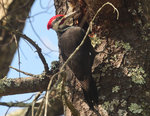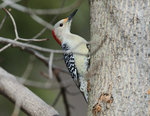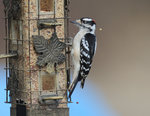 Narrowsburg
NarrowsburgLight Rain Fog/Mist, 43°
Wind: 8.1 mph
 Narrowsburg
NarrowsburgIt is the spring season and nature is waking up. In the morning, birds are calling, both the newly arrived migrants and the full-time residents. Breeding season is near. There is another sound in the …
Stay informed about your community and support local independent journalism.
Subscribe to The River Reporter today. click here
This item is available in full to subscribers.
Please log in to continue |



It is the spring season and nature is waking up. In the morning, birds are calling, both the newly arrived migrants and the full-time residents. Breeding season is near. There is another sound in the trees that is more noticeable nearby as well. It is the sound of drumming woodpeckers.
Our region has seven species of woodpeckers. They are the red-headed woodpecker, downy woodpecker, hairy woodpecker, pileated woodpecker, yellow-bellied sapsucker, red-bellied woodpecker and northern flicker. These birds, all of which belong to the family Picidae make most of the noise you hear by drumming. Drumming is usually performed to attract a mate. Drumming can also be used to keep another interloping woodpecker from encroaching into a claimed territory. Each species performs its own particular drumming. A downy woodpecker drums in short bursts of regular drums that resemble machine gun fire; a yellow-bellied sapsucker, on the other hand, will have a drawn-out erratic drum that trails off at the end. Like other birds, they also have unique vocalizations.
Aside from drumming, woodpeckers also use their bills to burrow into trees to forage for insects or to build nest cavities. This is usually quieter than the drumming. In addition, the trees that support a food source of insects are frequently compromised or altogether dead; the wood is softer. One can learn to identify the species of woodpecker by the characteristics of the marks left on the trees. A pileated woodpecker makes large cavities in trees, much larger than downy woodpecker cavities. Yellow-bellied sapsuckers make small holes in a tree that are neatly lined up in rows. These holes weep sap from the tree, and that is where the sapsucker gets its name; the sap is part of this species’ diet.
Woodpeckers can be naughty when they rap on the side of the house early in the morning, for instance. However, they are fun to watch at the feeder, and suet blocks or seed works well to attract them. If you’re lucky, you may find a nest cavity in a tree in the yard, and you will have fun listening and spotting the young as they wait for food from the adults.
Comments
No comments on this item Please log in to comment by clicking here